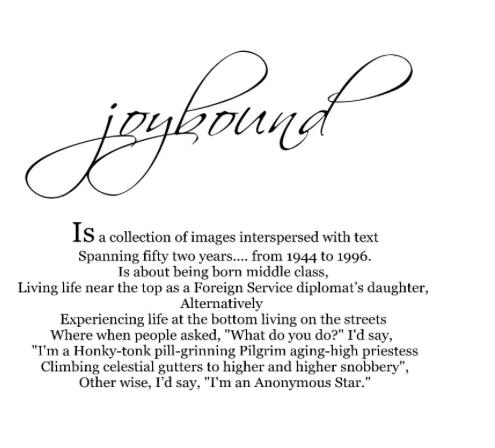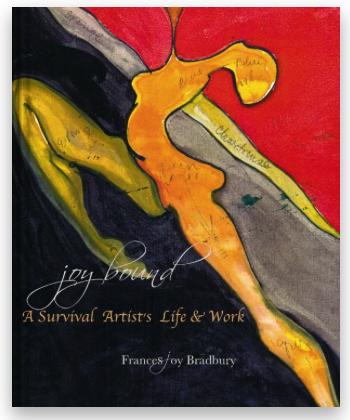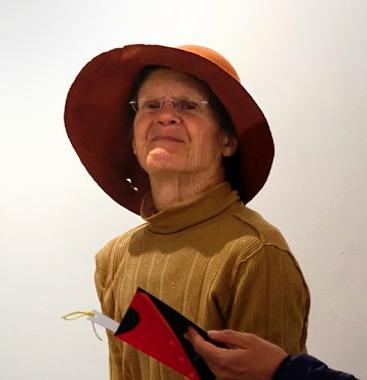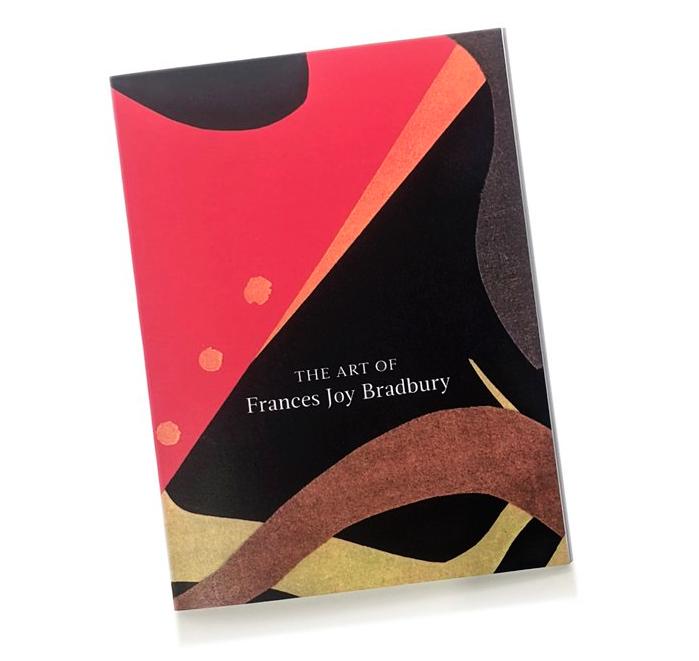5 Books by Artist Joy Frances Bradbury 1-3 At CU Libraryin Boulder: 3 albums (142 collages) : color illustrations ; 31 cm + 1 CD-ROM (digital : sd., b&w. ; 4 3/4 in. Contents Book I has 55 collage prints dated from 1/6/2021 to 4/14/21 -- Book II has 44 collage prints dated from 5/7/21 to 7/29/21 -- Book III has 43 collage prints dated from 8/6/21 to 12/15/21Note"What I want to share up front, is that, if I had not committed myself to making one collage a day during 2021 I doubt I'd be writing this introduction now for the three books of Art of Joy. Art making has been a life saver over and over again in my life. My first experience with collage was as a young child. My Grandmother, to keep me out of her hair, carried heavy bundles of construction paper up three flights of stairs and sat me at a large dining room table, where I evidently entertained myself with a flourish. Fifty years later my mother sent me some of these childhood collages. I was shocked. I didn't recognize my work. When I did, I saw that I'd had a flare for collage making from the get-go. This emboldened my artist spirit and still does. That's why prints of childhood collages are at the front of each of the three Art of Joy books. Why did I make this commitment? When Covid shut down happened I saw I needed ballast, focus and companionship. I knew from past experience that a daily art practice would provide these. Each day new art, mostly collage, came into my life like a new friend. For a while I worked in various formats. But I tired of framing irregular sizes and decided my art and myself needed parameters. I chose 4x6 for the format and I limited myself to using materials I had already, such as old drawings, paintings, prints and photographs. I even cannibalized old collages. Soon after starting one collage a day I discovered gesso. The chalky thick texture in combination with Indian ink took me places I'd never been before. The results can be seen on the 4th, 5th, 6th, and 7th pages of Book I. But before the gesso love affair, I spontaneously tried a technique that I later learned is called frottage. This effect is visible as vertical lines on the 2nd and 3rd pages of Book I. Speaking of love, midway in Book I are two images of a copulating couple from the 1960s free love days. Midway in Book II there are two images inspired by sumi ink strokes. The 'strokes' were cut from decades past calligraphy practice. On the following pages are two images inspired by my grandfather's hundred-year-old handwriting. are A constant throughout my work are surreal creatures and they are most prevalent in Book II. In Book III, midway, are eight images where I broke away from repurposing my own art and used images from a book. Two pages later are three images created by tossing remnants onto wet acrylic. At the end of Book III are examples of a collage method I designed called Crazy Quilt Collage. In addition to making daily collages I practice dialoging with my artwork. This is academically referred to as autoethnography. I ask two questions, "Where do you stand?" and "What do you want?" This dialogue practice was inspired by Thomas Hirschhorn who can be seen on the PBS series, Art in the 21st Century. The regular practice of making and dialoguing with art, revisiting to curate the work over a year later and now writing this introduction have been not only lifesaving but tremendously life inspiring. Please note there is a DVD in Art of Joy Book I. The DVD is a pdf copy of an online (Blurb's Book Smart) autobiography titled Joy Bound, A Survival Artist's Life & Work. Too, the book can be viewed at: http://www.blurb.com/books/2744740 Thank you, Tyler Alpern, for encouraging me as an artist and introducing me to Gregory Robl, a curator for the University of Colorado Boulder Library's Contemporary Book Arts Collection. Enjoy the Joy Ride through the three books of Art of Joy!"--Artist's statementAdditional AuthorBradbury, Frances Joy, donorOther TitleBook Arts CollectionOCLC or Other Control Numberrbc1376278981Call NumberN6494.C6 A78 2021 http://libraries.colorado.edu/record=b12923980~S3 4. Autobiography, Joy Bound : a survival artist's life & work Read and see all the artwork on line at Blurb: Also archived at CU Library. https://www.blurb.com/b/2744740-joy-bound 5. East Window honors visual artist Frances Joy Bradbury with a new publication featuring excerpts of her recent collage works. Also at CU Library. Frances Joy Bradbury As an artist who lived the 1960's in California's Bay Area, Frances Joy Bradbury's art reflects both her and the 60's exuberant expressiveness. A love of ambiguity, experimentation, gestural line and texture can be seen in Joy's shapeshifting images. Dancing with visual and psychological paradox is the backbone of Joy's work. Joy is a self taught artist. She began learning about art by going regularly to art exhibits and discovering that the art she did not like was a powerful teacher in understanding and expressing her own perceptions. In 1956 Joy celebrated her eleventh birthday watching a gecko fall from a high ceiling into a cocktail glass while she was sitting in a bar at Saigon's Majestic Hotel. A life lived in diverse settings combined with traversing a wide range of experiences, can be seen in Joy's exploration of many disciplines and her eclectic image making. Joy first exhibited in New Mexico at the Taos Library. In Colorado she's exhibited at Denver Outsider Art, Fort Collins Center for Fine Art Photography, Longmont Firehouse Gallery, Westminster Rodeo Market Community Art Center and Denver Art Students League. Boulder County exhibits include Front Range Community College, Dairy Center for the Arts, Art Parts, Boulder Museum of Contemporary Art, Boulder City Open Spaces & Mountain Parks, Boulder Public Library Maker Made Shows, The Bus Stop Gallery and the Museum of Boulder. Joy has also produced two solo shows at Enriching Elements in 2014 and Rule4 in 2016. |







